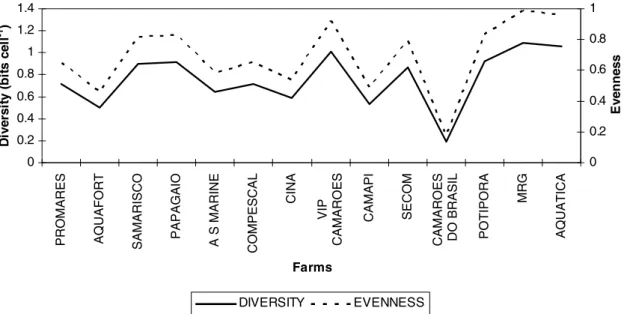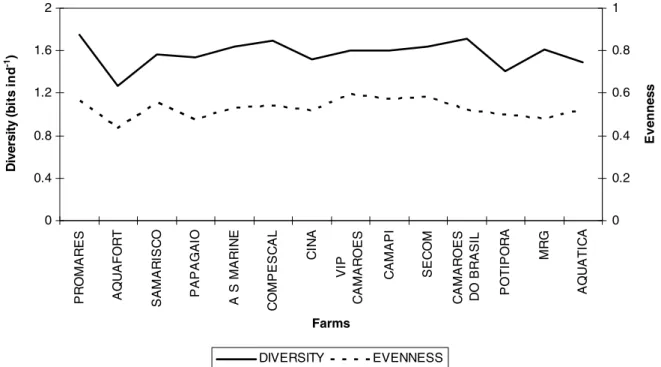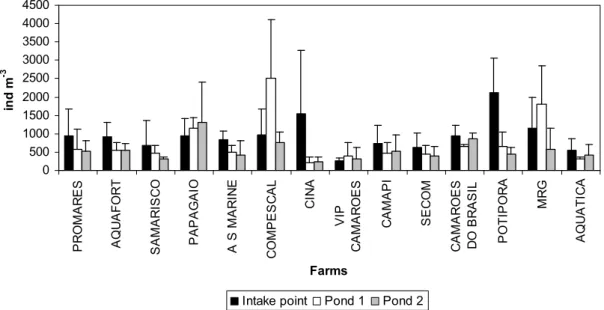Plankton community as an indicator of water quality in tropical shrimp culture ponds
Texto
Imagem




Documentos relacionados
O objetivo deste estudo foi atingido, pois foram selecionados os produtos agropecuários prioritários que apresentaram maior potencialidade para o incremento das exportações do
IVS: Interventricular septum; LA ɛa: Left atrial late diastolic strain (contractile function); LA ɛe: Left atrial early diastolic strain (conduit function); LA ɛsys: Left
Due to the importance of water variables conditions and available food in the development and survival of fish larvae, the current research evaluates the effects of two different
Eichhornia azurea and Salvinia auriculata macrophytes in maintaining water quality and communities associated in a water-supply reservoir to aquaculture farming. It was
Based on the results of the current analysis, water quality management in the fish pond shows a direct influence on planktonic population, since fish ponds are shallow and
Pois, com o aparente aumento das empresas do segmento farmacêutico que vem se instalando no município de Rolim de Moura - RO, deu-se a escolha do tema competitividade no
Objetivo: A presente investigac ¸ão teve como objetivo proceder à validac ¸ão da versão portu- guesa da Nova Escala de Satisfac ¸ão Sexual --- versão curta (NSSS-S), instrumento
Therefore, the present study is the first in Jordan and it was aimed out to utilize water lentils grown in irrigation water ponds as a source of protein by repla- cing percentages